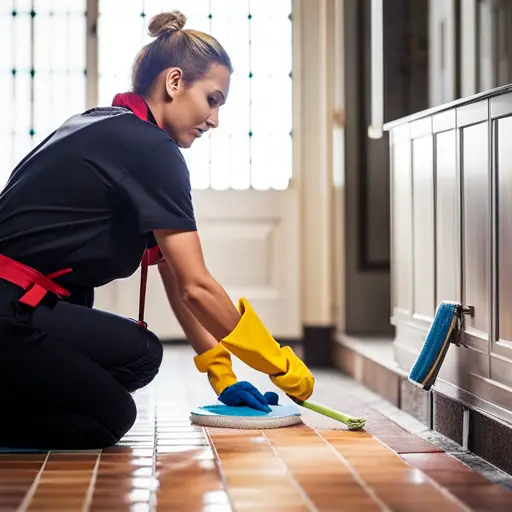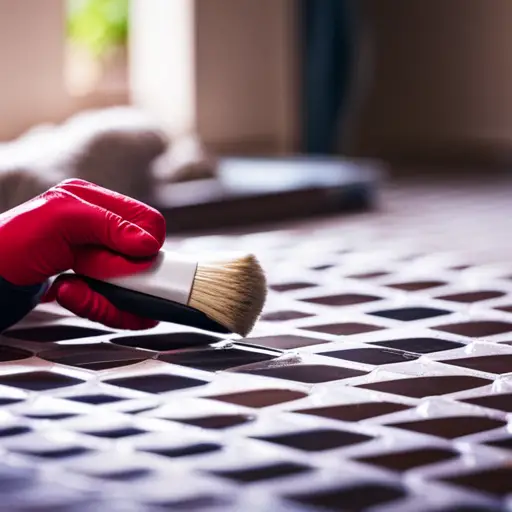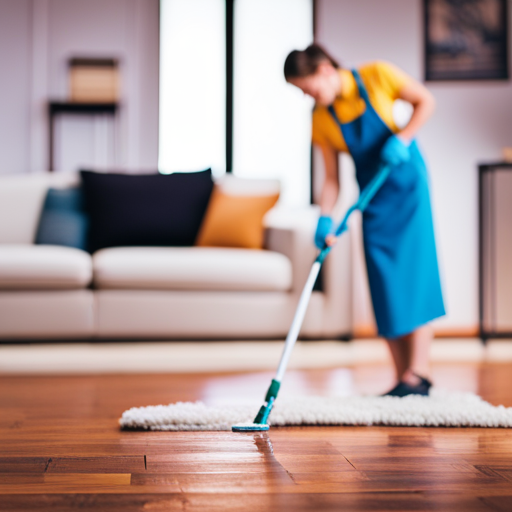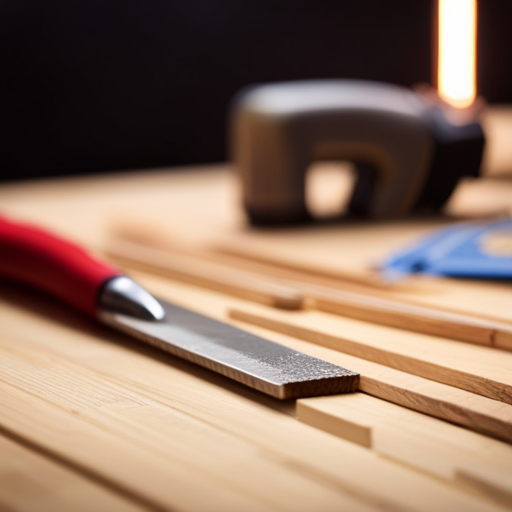Best Practices for Cleaning and Maintaining Tile Floors

Mastering the art of cleaning and maintaining tile floors is a formidable task that demands precision and expertise. From selecting the right cleaning products to implementing daily maintenance routines, every step in the process requires attention to detail.
This comprehensive guide will equip you with the best practices for preserving the luster and longevity of your tile floors. Whether it’s addressing stubborn stains or protecting different tile types, this article will provide essential insights for achieving pristine and enduring results.
Choosing the Right Cleaning Products
Selecting the appropriate cleaning products for tile floors is essential for maintaining their appearance and longevity. When considering natural vs. chemical cleaners, it’s important to weigh the pros and cons of each.
Natural cleaners are often preferred for their eco-friendly and non-toxic properties, making them safe for both the environment and the household. They can be just as effective as chemical cleaners, especially for regular maintenance, and are gentle on the grout and tiles.
On the other hand, chemical cleaners may be more powerful in tackling tough stains and grime, but they can also contain harsh ingredients that may cause damage to the tiles and pose health risks if not used properly. Effective DIY solutions are also worth exploring, as they offer a cost-effective and customizable alternative. From simple vinegar and water solutions to baking soda paste for stubborn spots, DIY cleaners can provide a gentle yet potent cleaning option for tile floors.
Transitioning into daily maintenance tips, it’s important to note that regardless of the cleaning products used, regular and proper maintenance is key to preserving the beauty and integrity of tile floors.
Daily Maintenance Tips
When it comes to daily maintenance of tile floors, regular sweeping and vacuuming are essential to prevent dirt and debris from accumulating.
Additionally, using gentle cleaning solutions specifically designed for tile will help maintain the floor’s appearance and longevity.
These simple practices can go a long way in preserving the beauty and functionality of tile floors.
Sweep and Vacuum Regularly
Regular sweeping and vacuuming are essential for preserving the beauty and longevity of tile floors. How frequently should tile floors be swept and vacuumed to maintain cleanliness and appearance? Here are some daily maintenance tips to follow:
-
Mopping Techniques and Stain Removal
-
Use a pH-neutral cleaner and a microfiber mop for effective cleaning without leaving residue.
-
Immediately attend to spills and stains to prevent them from setting and becoming harder to remove.
-
Preventing Scratches and Floor Protection
-
Place doormats at entry points to trap dirt and prevent it from scratching the tile surface.
-
Use felt protectors under furniture legs to avoid scratches and dents on the tiles.
Following these tips will help maintain the cleanliness and appearance of your tile floors, ensuring they remain in top condition for years to come.
Use Gentle Cleaning Solutions
One should use gentle cleaning solutions for daily maintenance of tile floors to prevent damage and maintain their cleanliness and appearance. Natural alternatives such as vinegar and baking soda are effective and safe options.
When using commercial cleaners, it’s crucial to follow the manufacturer’s instructions for proper dilution to avoid any potential harm to the tile surface. It’s advisable to test any new cleaning solution in a small, inconspicuous area to ensure it doesn’t cause any adverse effects.
Additionally, using a pH-neutral cleaner will help preserve the grout and prevent any discoloration or deterioration over time.
Deep Cleaning Techniques
Effective deep cleaning of tile floors requires the use of specialized cleaning solutions and equipment. To achieve a thorough clean, consider the following techniques:
-
Steam Cleaning: Utilize a steam cleaner to penetrate tile grout and loosen stubborn dirt and stains. The high-temperature steam helps to disinfect the floors and remove deep-seated grime without the need for harsh chemicals.
-
Professional Scrubbing: Engage professional cleaning services equipped with industrial-grade scrubbing machines. These machines are designed to agitate and lift dirt from the pores of the tile and grout, resulting in a comprehensive cleanse that may be challenging to achieve with regular household equipment.
Utilizing these deep cleaning techniques, such as steam cleaning and professional scrubbing, can revitalize the appearance of tile floors, ensuring they remain hygienic and appealing.
It’s important to carefully follow manufacturer guidelines and test any new cleaning method in an inconspicuous area before proceeding with deep cleaning to avoid potential damage to the tile or grout.
Addressing Grout and Stains
To effectively address grout and stains on tile floors, thorough cleaning and targeted stain removal techniques are essential. Grout sealing is a crucial step in maintaining the appearance and longevity of tile floors. It helps to prevent stains and discoloration, making future cleaning and maintenance more manageable. When it comes to stain removal, using the right products and techniques is key to preserving the grout and the tile’s surface. Here are some effective stain removal techniques to consider:
| Stain Type | Recommended Treatment | Additional Tips |
|---|---|---|
| Dirt and Mud | Mild detergent and scrubbing | Use a soft-bristled brush |
| Food and Grease | Baking soda and vinegar paste | Let the paste sit for 15-20 minutes before scrubbing |
| Mold and Mildew | Bleach or hydrogen peroxide | Ensure proper ventilation and use protective gear |
Protecting and Sealing Tile Floors
After addressing grout and stains with targeted stain removal techniques, the next crucial step in maintaining tile floors is to focus on protecting and sealing their surfaces. Proper sealing techniques are essential for long-term protection against stains, moisture, and wear and tear.
Here are some key points to consider when protecting and sealing tile floors:
-
Choosing the Right Sealant: Select a high-quality sealant that is suitable for the specific type of tile used in your flooring. Different types of tile, such as ceramic, porcelain, and natural stone, may require different sealants for optimal protection. Consider consulting with a professional to determine the most appropriate sealant for your particular tile flooring.
-
Regular Maintenance: Implement proactive maintenance measures to prevent damage and extend the lifespan of the sealant. Regularly clean the floors using gentle, non-abrasive methods and promptly wipe up spills to avoid stains and potential damage to the sealed surfaces.
Handling Different Tile Types
When handling different tile types, it is important to understand the specific maintenance requirements for each type of tile.
For ceramic and porcelain tiles, regular grout care is essential to prevent discoloration and mold growth. Use a pH-neutral cleaner to avoid damaging the grout, and periodically apply a grout sealer to protect it from stains and moisture.
Natural stone tiles such as marble, slate, or limestone require specialized cleaning to avoid etching or discoloration. It’s crucial to use a stone-specific cleaner and avoid acidic or abrasive products.
Additionally, prompt stain removal is crucial for all tile types. For non-porous tiles like porcelain, stains can usually be wiped away easily. However, for more porous materials like natural stone, immediate attention and the use of a poultice to draw out the stain may be necessary.
Understanding the unique care requirements for each tile type is essential for maintaining the longevity and beauty of your floors.
Professional Maintenance Services
How can professional maintenance services help ensure that the specific care requirements for different tile types are met effectively and efficiently?
Professional maintenance services play a crucial role in ensuring that tile floors receive the specialized care they need to stay in optimal condition. Here are some ways in which professional maintenance services can contribute to the long-term maintenance and preventative care of tile floors:
- Professional Restoration Services
Professional maintenance services often include access to specialized equipment and expertise in restoration techniques. This allows for the effective removal of stubborn stains, grime, and discoloration from tile surfaces. Restoration services can also involve repairing damaged tiles, regrouting, and addressing any other structural issues to prolong the lifespan of the tile floor.
- Long Term Maintenance and Preventative Care
Professional maintenance services are equipped to provide ongoing care that goes beyond regular cleaning. This may include applying sealants, performing routine inspections for potential issues, and implementing preventative measures to avoid damage and deterioration over time.
Frequently Asked Questions
Can I Use a Steam Cleaner on My Tile Floors for Deep Cleaning?
Yes, a steam cleaner can effectively deep clean tile floors, but it’s important to use it cautiously to avoid damaging grout or tiles. Alternative methods include using specialized tile cleaners or seeking professional services for thorough cleaning.
How Do I Remove Stubborn Stains Like Oil or Grease From My Tile Floors?
Stubborn oil or grease stains on tile floors require targeted treatment. Begin by using a degreaser to break down the residue, then gently scrub with a soft brush. Consider reapplying protective sealants and, for persistent stains, professional cleaning services.
Are There Any Specific Cleaning Techniques for High-Gloss or Polished Tile Floors?
For high-gloss or polished tile floors, specific cleaning techniques are vital. Use gentle, non-abrasive cleaners to preserve the finish. Regularly dust or vacuum to prevent scratches. Consider professional services for deep cleaning and maintenance tips.
What Is the Best Way to Prevent Scratches and Damage to My Tile Floors From Furniture?
To prevent scratches and damage to tile floors from furniture, it’s essential to employ preventive measures. Using furniture pads is an effective way to safeguard the floors from scratches and dents caused by furniture movement.
Can I Use Homemade Cleaning Solutions on My Tile Floors, and if So, What Are the Best Recipes to Use?
Homemade cleaning solutions, such as a vinegar solution, can be effective for tile floors. Natural cleaners offer eco-friendly options. It’s important to test any homemade solution in a small area to ensure compatibility and effectiveness.
Conclusion
In conclusion, proper cleaning and maintenance are essential for preserving the look and longevity of tile floors. According to a study by the National Tile Contractors Association, 80% of homeowners prefer tile floors in their homes due to their durability and easy maintenance.
By following best practices, such as using the right cleaning products, daily maintenance, and addressing grout and stains, homeowners can ensure their tile floors remain in top condition for years to come.

Rubin Everest, a seasoned expert in the world of flooring, brings a wealth of knowledge and passion to the surface. As the mind behind ebbow.com, Rubin is dedicated to sharing insights on the latest trends, innovative solutions, and expert advice in the realm of flooring. Whether you’re seeking practical tips for installation or design inspiration, Rubin Everest is your go-to source for all things flooring-related, making your journey to the perfect floor an informed and enjoyable experience.





